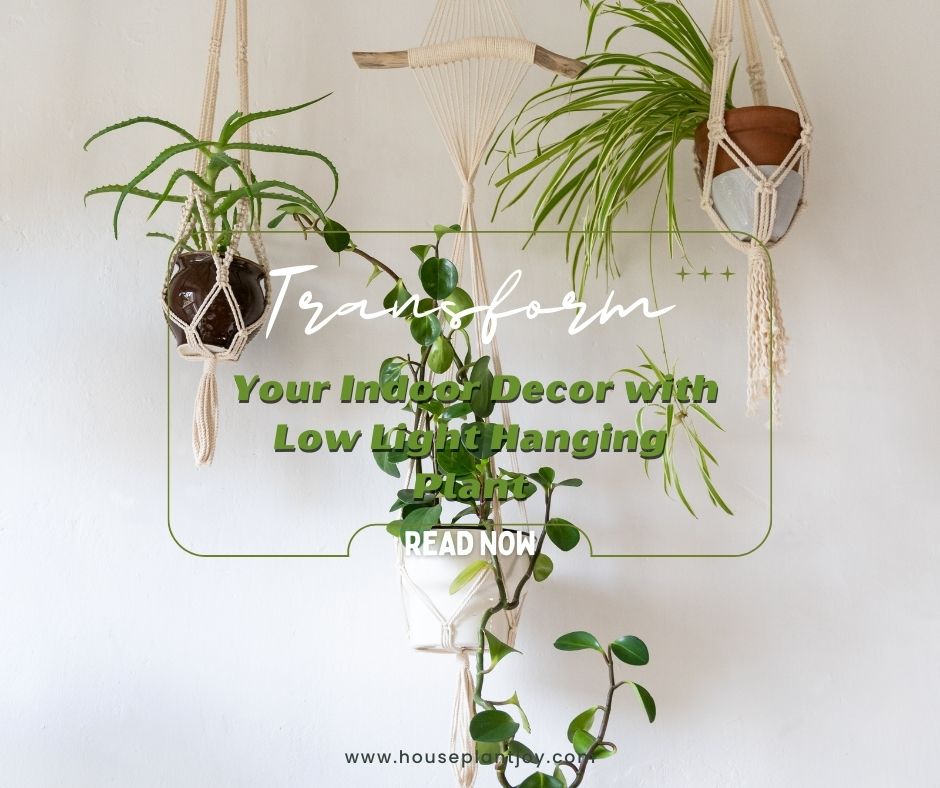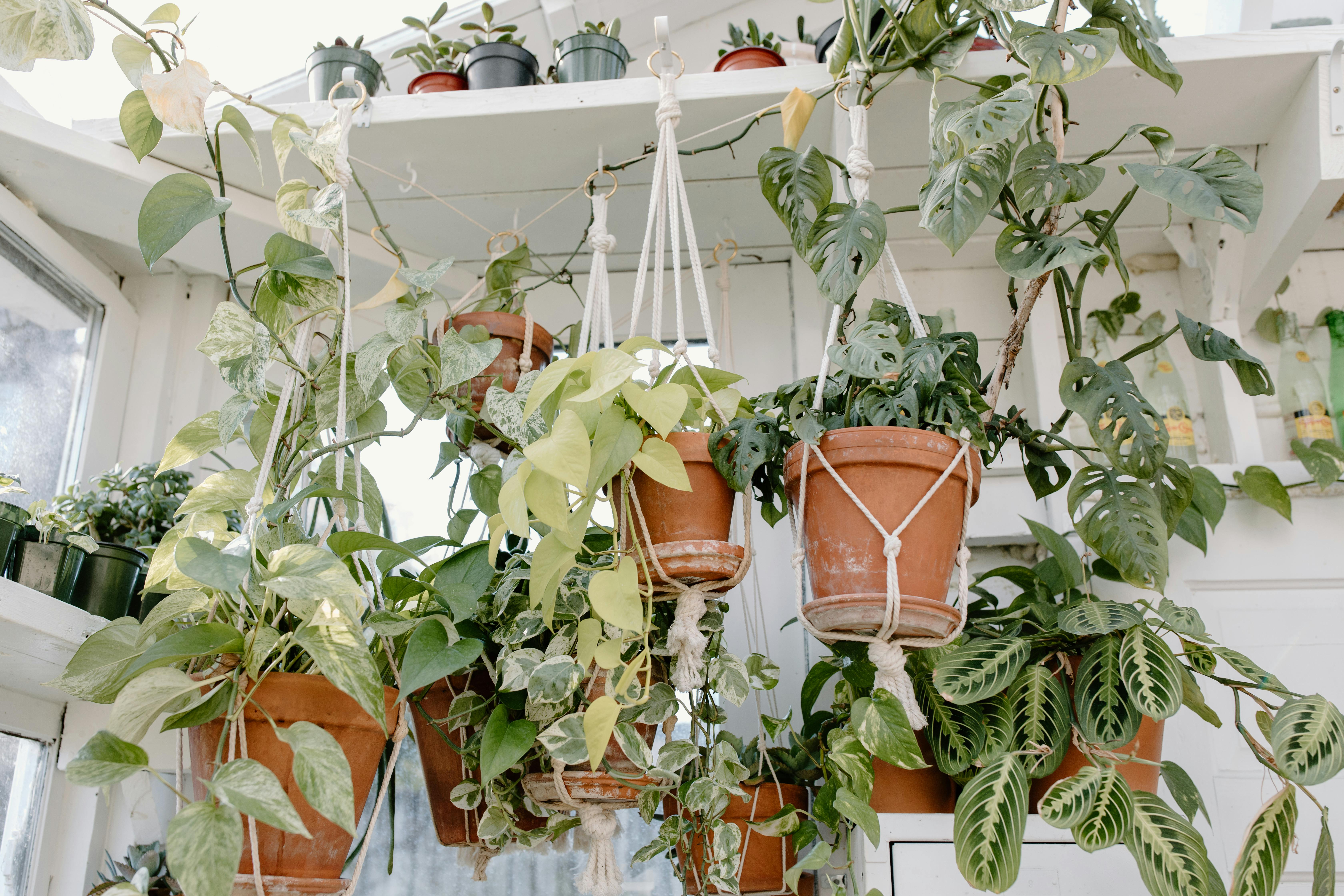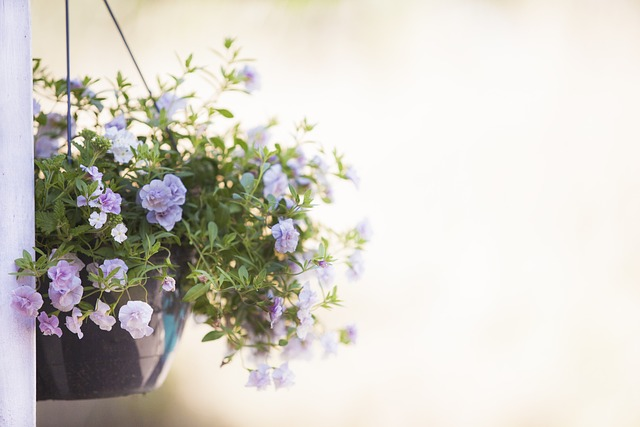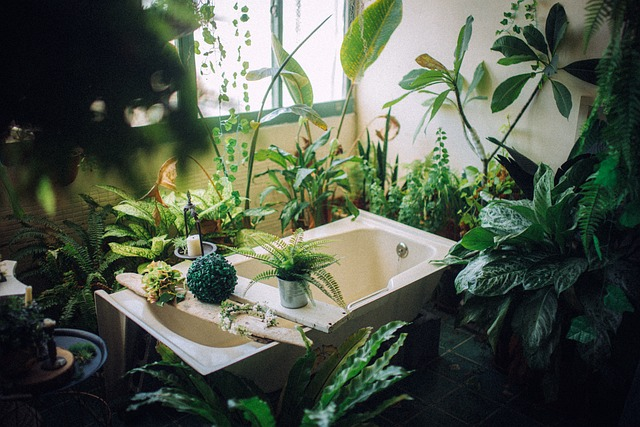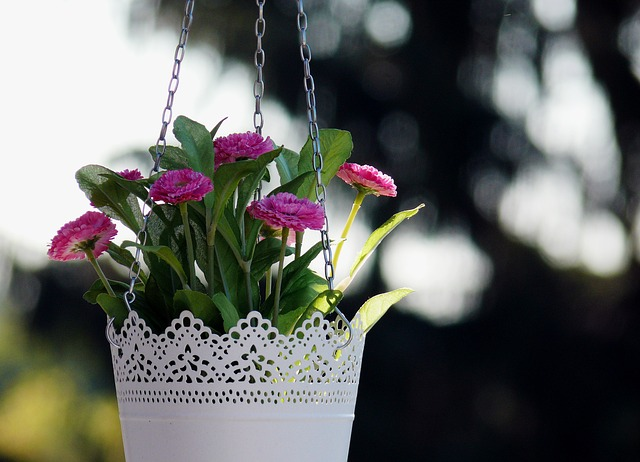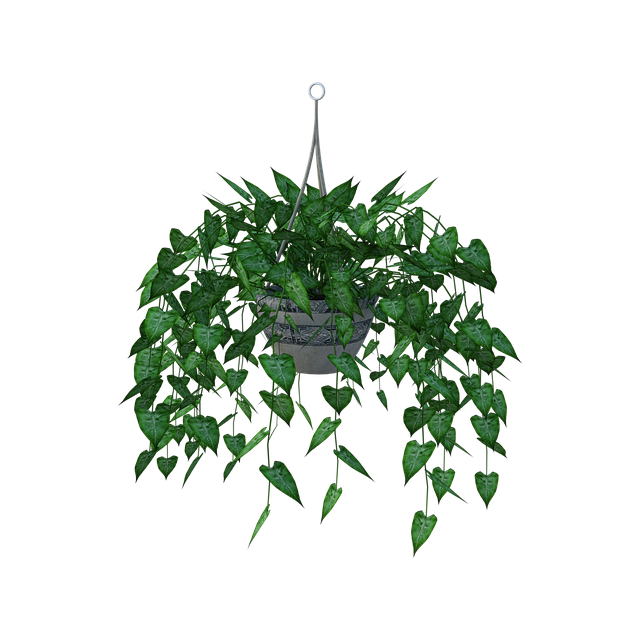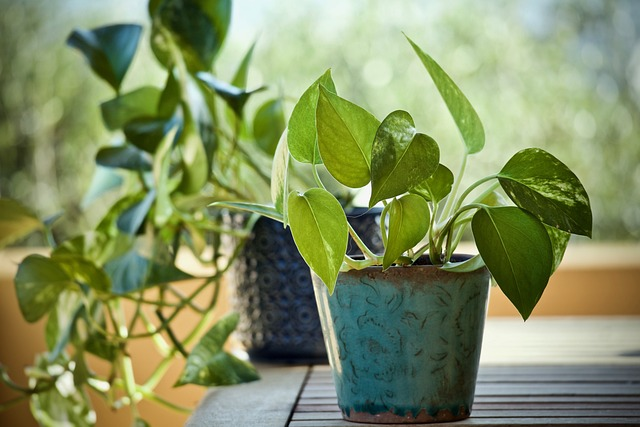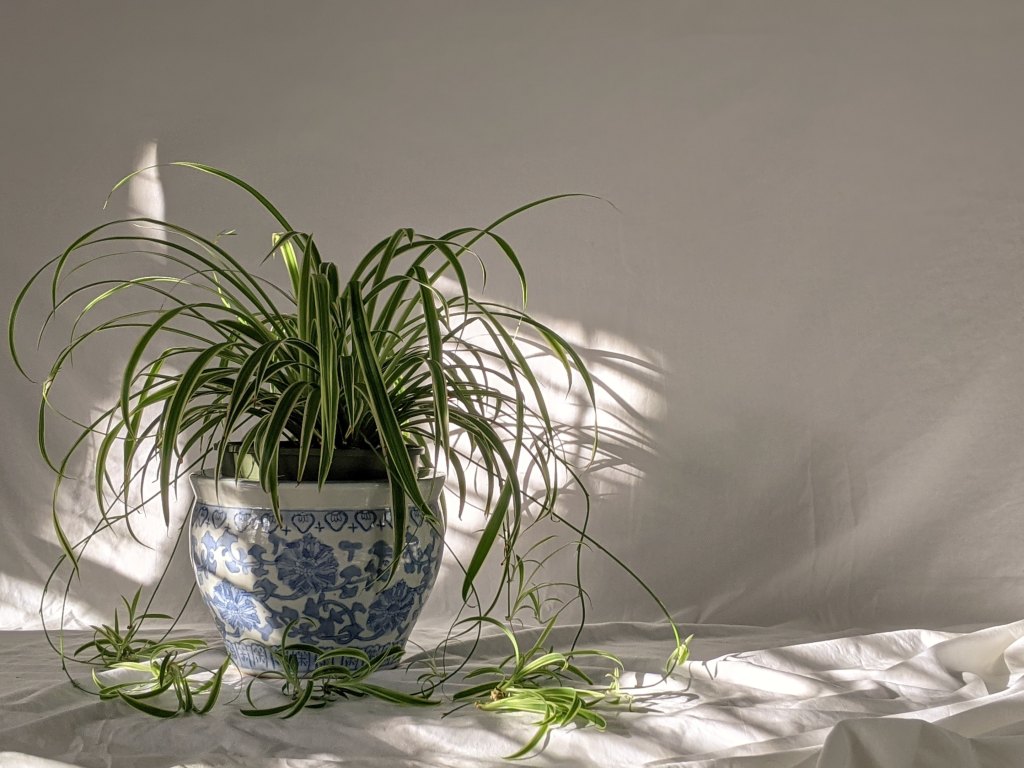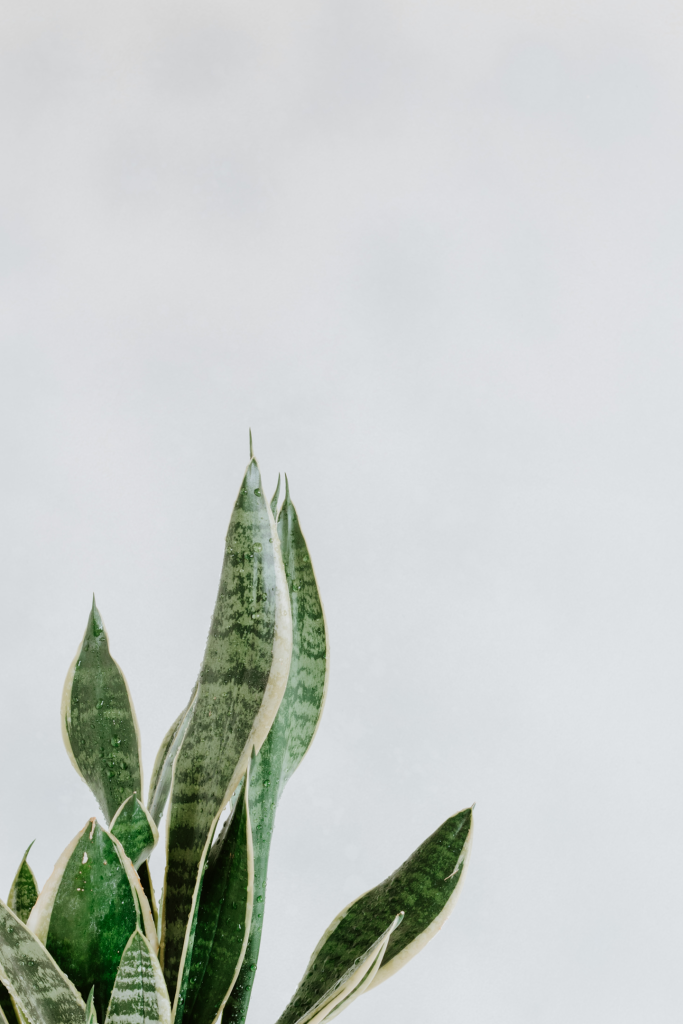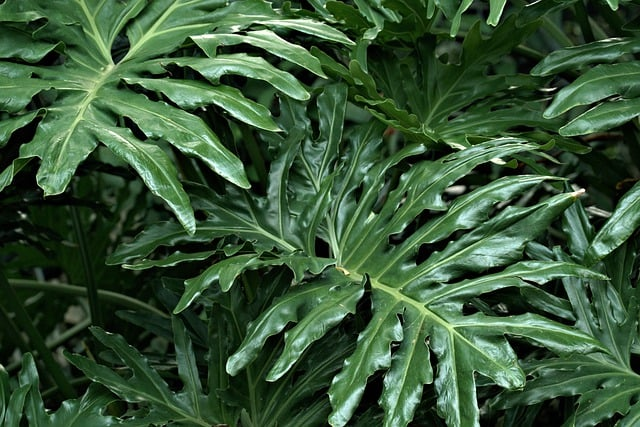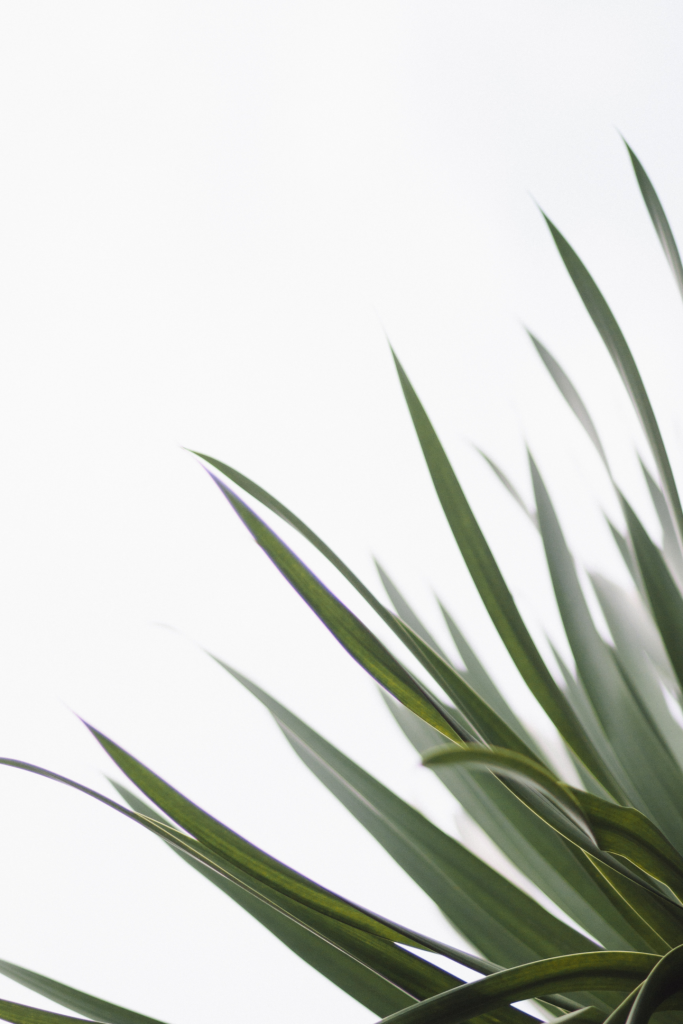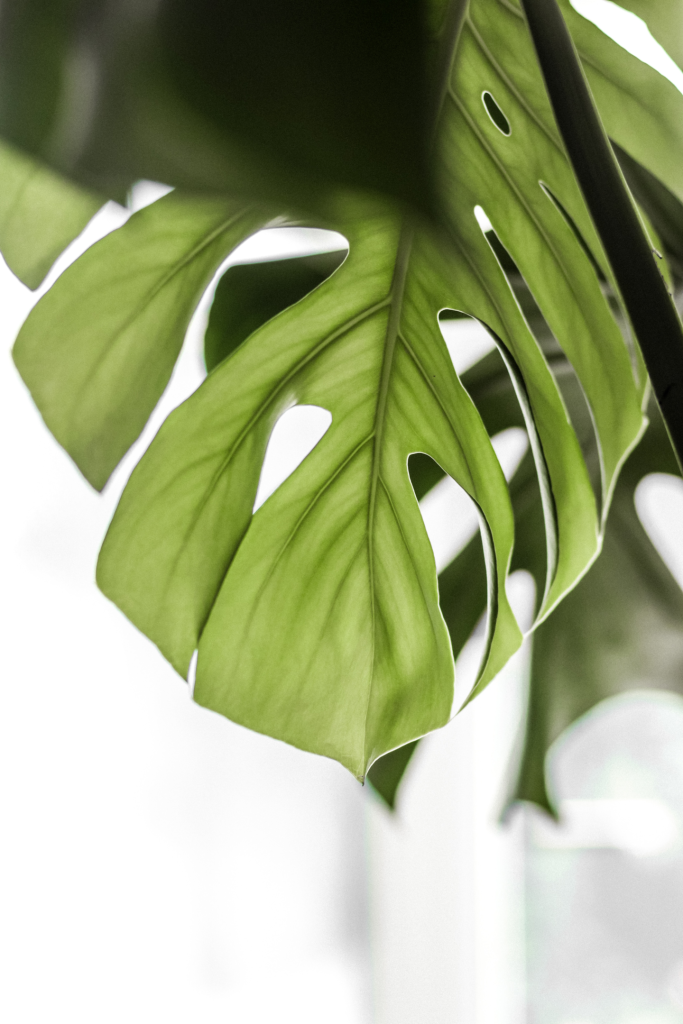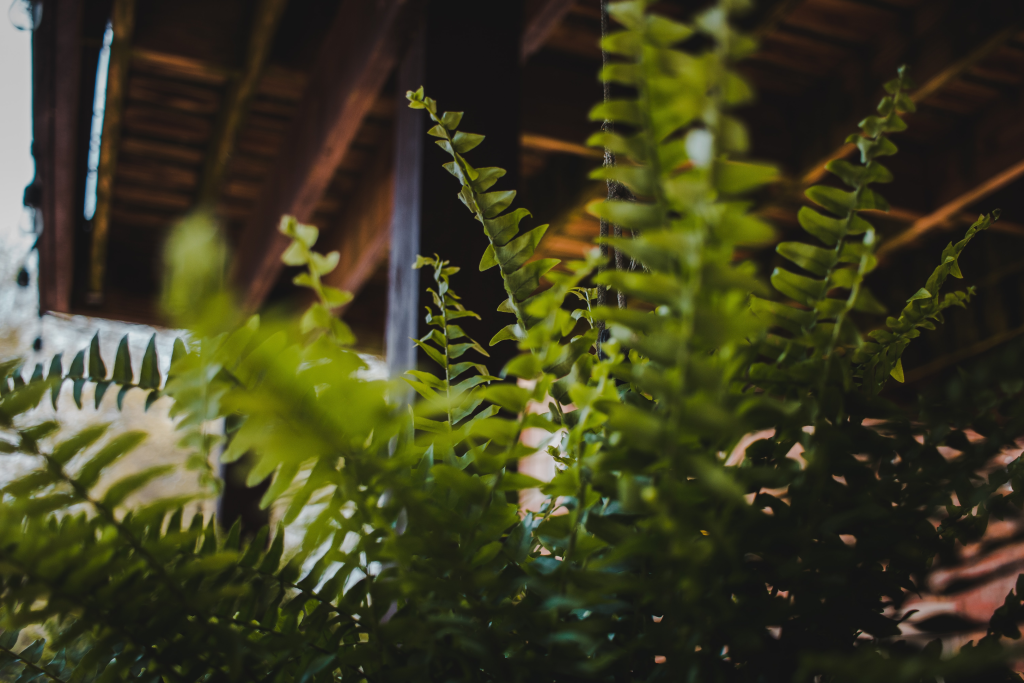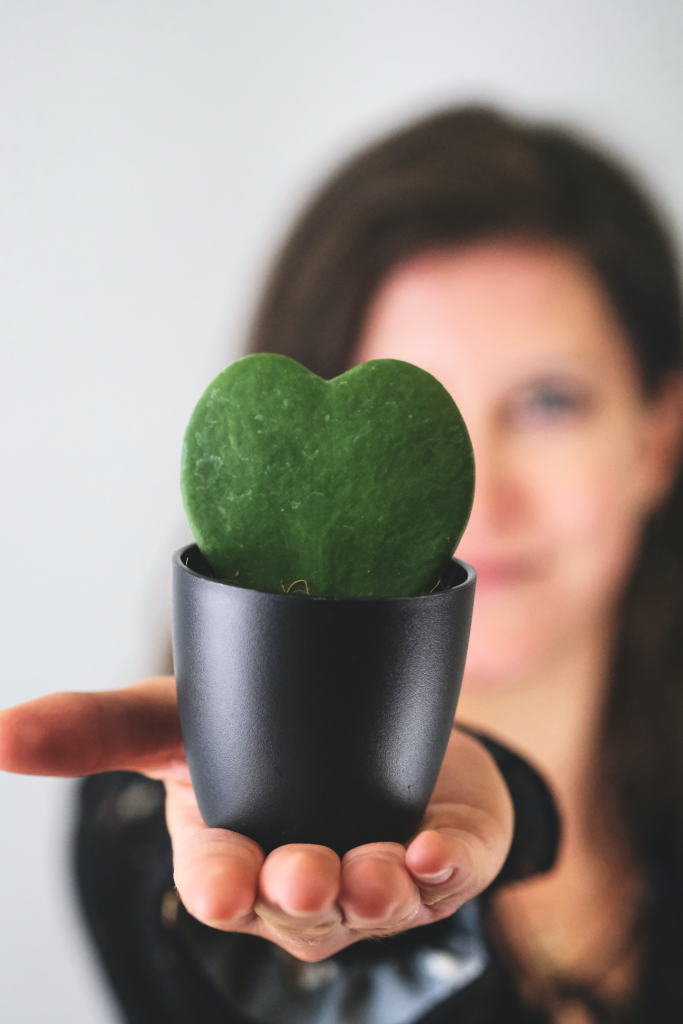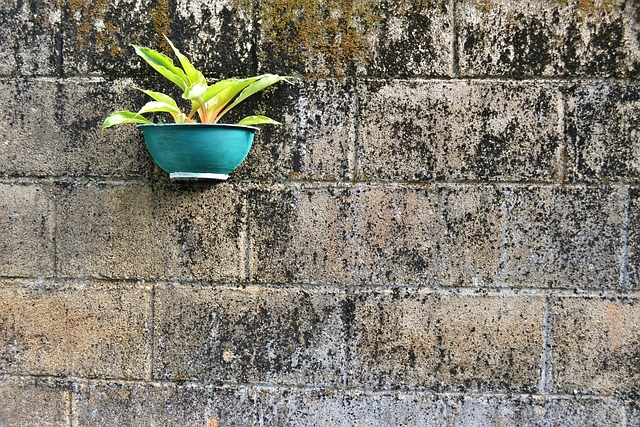HousePlantJoy is supported by our audience. When you purchase through one of our links, we may earn a small affiliate commission. As an Amazon Associate I earn from qualifying purchases. Your cost is not affected.
==================
“If you’re seeking a captivating way to spruce up your indoor space, look no further than low light hanging plant. These enchanting botanical wonders have the power to transform your home’s ambiance and breathe new life into any room.”
Decorating with low light hanging plants can add a touch of natural beauty to any space, enhancing its aesthetic appeal while also providing numerous health benefits. The greenery of these plants can improve air quality, reduce stress, and promote feelings of calmness and relaxation. With their unique shapes and textures, low light hanging plants can add depth and dimension to a room, making it feel more welcoming and vibrant. Whether you’re looking to spruce up your home or office, adding some low light hanging plants can be a simple but effective way to transform any space into a healthier and happier environment.
Transform Your Indoor Decor with Low Light Hanging Plants: Discover the Perfect Options
Indoor plants have become an essential element in home décor, and for good reason. Not only do they add a touch of nature to your living space, but they also provide numerous benefits for your overall well-being. If you have a low light environment in your home, don’t worry; plenty of stunning hanging plants thrive in these conditions. This article will explore the world of low light hanging plants and how they can transform your indoor décor. Whether you are a plant enthusiast or a beginner, you will find the perfect options to bring life and beauty to your home.
The Importance of Indoor Plants in Home Décor
Indoor hanging plants have become a popular trend in home décor, and it’s not difficult to see why. Apart from their aesthetic appeal, they offer a range of benefits that contribute to a healthy and vibrant living space. Studies have shown that indoor plants can improve air quality by removing toxins and increasing oxygen levels. They also have a calming effect, reducing stress and enhancing overall well-being. With their ability to add a touch of greenery and life to any room, indoor plants have become a staple in modern interior design. By incorporating low light hanging plants into your décor, you can create a visually striking and harmonious environment.
Understanding Low Light Conditions for Indoor Plants
Before diving into the world of low light houseplants, it’s important to understand what constitutes an indirect light environment. Low light conditions refer to areas in your home where natural sunlight is limited or indirect. These areas often include corners, hallways, and rooms with small windows. It’s important to note that not all plants can thrive in indirect light conditions, as they require a certain amount of sunlight for photosynthesis. However, there are several low light hanging plants that have adapted to these conditions and can flourish beautifully in your indoor spaces.
Benefits of Hanging Plants in Low Light Environments
Indoor hanging plants have gained popularity in recent years due to their versatility and unique aesthetic appeal. When it comes to low light environments, indoor hanging plants offer numerous benefits that make them an ideal choice for indoor spaces. Firstly, they take up minimal floor space, making them perfect for small apartments or rooms with limited square footage. Secondly, hanging plants add a dimension of height and depth to your décor, creating visual interest and drawing the eye upwards. Additionally, they can be placed in unconventional spots such as high shelves or suspended from the ceiling, allowing you to utilize every inch of your living space. By opting for low light hanging plants, you can enjoy the benefits of indoor greenery even in the darkest corners of your home.
Popular Low Light Best Indoor Hanging Plants for Indoor Spaces
Now that you understand the importance of low light hanging plants, let’s explore some popular options of best indoor hanging plants.
Pothos Plant (Epipremnum Aureum):
Pothos is a versatile and hardy plant that thrives in low light conditions. It features heart-shaped leaves that come in various shades of green, making it a visually appealing addition to any room.
Spider Plant (Chlorophytum Comosum):
The spider plant is known for its long, arching leaves with striking variegated patterns. It can tolerate low light conditions and is a great choice for hanging baskets. While many plants struggle to survive without ample sunlight, the spider plant is known for their resilience in such environments. This makes the spider plant an ideal choice for indoor spaces with limited natural light, such as offices or rooms with small windows. Moreover, the tolerance of spider plant for low light doesn’t compromise its overall health or vitality. It remains a sturdy and attractive plant, maintaining its lush foliage and variegated patterns even in less-than-optimal lighting conditions.
ZZ Plant (Zamioculcas Zamiifolia):
If you’re looking for a low maintenance plant that can withstand neglect and low light, the ZZ plant is your best bet. It has glossy, dark green leaves that add a touch of elegance to your indoor space.
Snake Plant (Sansevieria Trifasciata):
Snake plants are renowned for their ability to thrive in low light environments. Their upright, sword-like leaves make a bold statement and are perfect for hanging planters.
(Philodendron spp.):
Philodendrons are popular hanging plants that are well-suited for low light conditions. They come in a variety of shapes and sizes, from trailing vines to heart-shaped leaves, allowing you to choose the perfect option for your home.
Prayer Plant (Maranta Leuconeura):
The prayer plant is a tropical plant that stands out for its stunning and decorative leaves. One of the most popular varieties is the tricolor, which has deep green leaves with velvety texture. These leaves are adorned with yellow splotches along the midrib and striking red veins that extend towards the edges of the leaves. In terms of growth, the prayer plant is a slow-grower, gradually reaching a height of up to one foot when kept indoors. It is a favored choice among plant enthusiasts and commonly used as a houseplant. The great thing about prayer plants is that they can be planted and cared for indoors throughout the year, making them suitable for any season. Prayer plant has the ability to thrive in various types of soil, as long as the soil has good drainage.
Cast Iron Plant (Aspidistra Elatior):
The cast-iron plant is a resilient and low-maintenance option for challenging areas in the garden. It thrives in deep shade, tolerates minimal sunlight near foundations or under deck stairs, and is seldom bothered by insects or diseases. With simple watering when the soil dries out and fertilizes at specific times, the cast-iron plant can withstand neglect and is best suited for a hands-off approach, making it an ideal choice for gardeners with limited time or less-than-ideal conditions.
Arrowhead Plant (Syngonium Podophyllum):
The Arrowhead Plant gets its common name from the distinctive shape of its leaves, which resemble arrowheads or spades. This plant is known for its fast growth and abundant foliage. As it grows, it continually unfurls new leaves, offering a variety of colors ranging from dark green with prominent white variegation to shades of lime and even pink. When young, the Arrowhead Plant features upright clusters of stems. As it matures, it develops trailing or climbing stems and larger leaves. You can easily trim it to your desired size and form if you prefer to maintain its youthful shape.
Swiss Cheese Plant (Monstera Adansonii):
The Swiss cheese plant is a natural climber, utilizing its aerial roots that grow downward from the stem to anchor itself to the ground or any support it can find. In its native habitat, it uses these roots to propel itself onto neighboring trees or vines. As a houseplant, you can replicate this behavior by placing a stake in the center of its pot. To ensure its well-being, your primary tasks will involve regularly watering and feeding the plant. Additionally, some maintenance pruning may be necessary to keep the plant at your desired size.
Boston Fern:
Boston Ferns are plants that might be the most recognized hanging pot plant. People love them for their ability to thrive in low light environments. With their flourishing, draping fronds, they make a bold statement. We consider these among the most perfect for hanging planters.
Wandering Jew:
Wandering Jew plants make great options for popular hanging plants. They are well-suited for low light conditions and make a beautiful trailing plant. These plants thrive in a hanging planter.
These are just a few examples of low light hanging plants that can transform your indoor décor. By selecting the right plants for your space, you can create a lush and inviting atmosphere that will leave your guests in awe.
Sweetheart Plant:
Among the many Hoya plant varieties that are well-suited for indoor cultivation, Hoya kerrii, commonly known as the Sweetheart Plants, stands out as a popular choice. Over the past few years, its popularity has been steadily growing among plant enthusiasts. However, despite its rising fame, it can still be challenging to find comprehensive information and care tips specifically tailored to this particular plant.
Hoya kerrii, with its heart-shaped leaves, has captured the hearts of many plant lovers. Its unique leaf structure adds a touch of charm and elegance to any indoor space. The Sweetheart Plants has gained a reputation for being an excellent houseplant due to its relatively low maintenance requirements and ability to thrive in typical indoor conditions.
How to Care for Low Light Hanging Plants
Now that you have chosen the perfect low light hanging plants for your home, it’s important to understand how to care for them to ensure their health and longevity. Here are a few essential tips:
Watering:
Low light hanging plants generally require less water compared to their counterparts in brighter environments. It’s important to strike a balance between underwatering and overwatering. Check the moisture level of the soil before watering and make sure to let the soil dry out slightly between waterings.
Light:
While low light plants can tolerate less sunlight, they still require some indirect light to thrive. Place your hanging plants near windows or in areas where they can receive a few hours of filtered sunlight each day.
Fertilizing:
Low light plant has slower growth rates, so they don’t require frequent fertilization. Use a balanced, water-soluble fertilizer once a month during the growing season to provide essential nutrients.
Pruning:
Regular pruning is necessary to maintain the shape and health of your low light hanging plants. Remove any yellow or dead leaves, and trim back leggy growth to encourage bushier growth.
By following these care tips, you can ensure that your low light hanging plants remain healthy and vibrant, enhancing the beauty of your indoor space.
Creative Ways to Display Low Light Hanging Plants in Your Home
Once you have mastered the art of caring for low light hanging plants, it’s time to explore creative ways to display them in your home. Here are a few ideas to get you started:
Macramé Plant Hangers:
Macramé plant hangers are a trendy and stylish way to display your low light hanging plants. They add a bohemian touch to any room and can be customized to match your décor.
Wall-Mounted Planters:
Utilize your wall space by installing wall-mounted planters for your low light hanging plants. This saves floor space and creates a unique and eye-catching display.
Floating Shelves:
Install floating shelves on your walls and arrange your low light hanging plants in a cascading manner. This creates a beautiful and dynamic display, adding depth and visual interest to your space.
Terrariums:
Create your own miniature garden by placing your low light hanging plants in glass terrariums. This allows you to showcase multiple plants in a visually stunning way.
By thinking outside the box and experimenting with different display options, you can turn your low light hanging plants into captivating focal points that elevate your indoor décor.
Choosing the Right Hanging Planters for Low Light Environments
When it comes to low light hanging plants, choosing the right planters is just as important as selecting the plants themselves. The right planter can enhance the overall aesthetic appeal of your indoor space while providing a suitable environment for your plants to thrive. Here are a few factors to consider when choosing hanging planters for low light environments:
Material:
Opt for lightweight and durable materials such as ceramic, plastic, or woven baskets. These materials are aesthetically pleasing and provide adequate drainage for your plants.
Size:
Consider the size of your low light hanging plants and choose planters that allow for proper root growth. Avoid oversized planters as they can lead to waterlogging and root rot.
Style:
Select planters that complement your existing décor and personal style. Whether you prefer minimalist designs or vibrant colors, plenty of options are available to suit your taste.
Hanging Mechanism:
Choose planters with secure and reliable hanging mechanisms to ensure that your low light hanging plants are safely displayed.
By considering these factors, you can find the perfect hanging planters that not only showcase your low light plants but also elevate the overall ambiance of your indoor space.
DIY Projects for Creating Your Own Hanging Planters
If you’re feeling creative and want to add a personal touch to your indoor décor, why not try your hand at creating your own hanging planters? Here are a few DIY projects to get your creative juices flowing:
- Macramé Plant Hanger: Learn the art of macramé and create your own unique plant hangers using ropes or cords. There are plenty of tutorials available online to guide you through the process.
- Upcycled Containers: Give new life to old containers such as mason jars, tin cans, or teacups by turning them into hanging planters. Paint them in vibrant colors or wrap them in decorative fabric to add a pop of personality to your indoor space.
- Hanging Basket from Embroidery Hoop: Repurpose an embroidery hoop by attaching a mesh or wire basket to create a stylish hanging planter. This simple and budget-friendly DIY project adds a touch of elegance to your home.
- Hanging Planter Shelf: Build a wooden shelf with multiple levels to display your low light hanging plants. This DIY project allows you to create a customized and visually appealing plant display.
By engaging in DIY projects, you save money and add a personal touch to your indoor décor. Get creative and let your imagination run wild!
When to Repot Low Light Hanging Plants
As your low light hanging plants grow, they may outgrow their current pots and require repotting. Here are a few signs that indicate it’s time to repot your plants:
Roots Growing Through Drainage Holes:
If you notice roots growing through the drainage holes of your plant’s pot, it’s a clear indication that it needs a larger pot to accommodate its growing root system.
Stunted Growth:
If your low light hanging plants have stopped growing or have become leggy, it may be due to the lack of space in their current pots. Repotting them into larger containers will give them room for healthy growth.
Watering Difficulties:
If the soil in your plant’s pot dries out quickly or water fails to penetrate the root ball during watering, it’s a sign that the roots have become tightly packed. Repotting will allow the roots to spread out and absorb water more effectively.
Yellowing Leaves:
If the lower leaves of your low light hanging plants start turning yellow or wilting, it may be a sign of root congestion. Repotting them into fresh soil will provide them with the nutrients they need to thrive.
When repotting your low light hanging plants, make sure to choose a pot that is one or two sizes larger than their current pot. Use a well-draining potting mix and gently loosen the roots before placing them in their new home. This will ensure that your plants have ample space to grow and flourish.
Enhance Your Indoor Décor with Beautiful Low Light Hanging Plants
Low light hanging plants offer a world of possibilities when it comes to indoor décor. You can transform your home into a lush and vibrant sanctuary by understanding the importance of indoor plants, their conditions, and how to care for them. From popular low light hanging plant options to creative display ideas and DIY projects, endless opportunities exist to unleash your creativity and create a visually stunning indoor space. So, why wait? Discover the perfect low light hanging plants and embark on a journey to enhance your indoor décor today!
FAQs
Can low light hanging plants survive in areas with limited natural light?
Yes, low light hanging plants are specifically adapted to thrive in environments with minimal sunlight. They have evolved to utilize available light efficiently and can flourish even in shaded areas of your home.
Are low light hanging plants suitable for small spaces?
Absolutely! they are excellent space-saving solutions, especially in smaller homes or apartments. By suspending them from the ceiling or placing them on high shelves, you can maximize your living area while enjoying greenery’s benefits.
How do low light hanging plants contribute to indoor air quality?
Many low light hanging plants, such as pothos, snake plants, and philodendrons, are known for their air-purifying qualities. They absorb harmful toxins and release oxygen, helping to improve indoor air quality and create a healthier living environment.
Do low light hanging plants require special care?
While low light hanging plants are adaptable and can survive in low light conditions, they still require some care. It’s essential to provide them with adequate water and occasional fertilization, depending on the specific plant species. Regularly dusting their leaves and ensuring proper drainage are important for their overall health.
Elevate Your Space Today with Low Light Hanging Plants!
Transform your indoor space with low-light hanging plants and bring nature into your home. Explore our collection of low light hanging plants and start creating a stunning indoor oasis today!
Facebook: https://www.facebook.com/houseplantjoyblog
Instagram: http://instagram.com/houseplantjoy20
Twitter: https://twitter.com/HouseplantJoy
Explore our wide selection of low light hanging plants and start your indoor décor transformation today!

